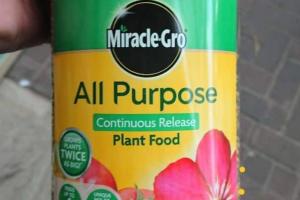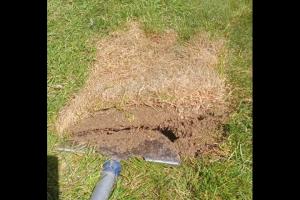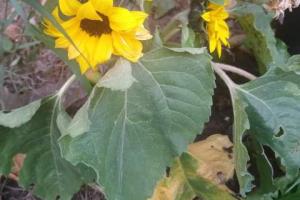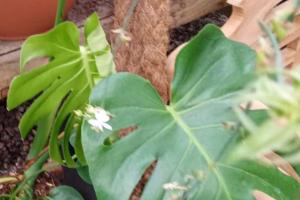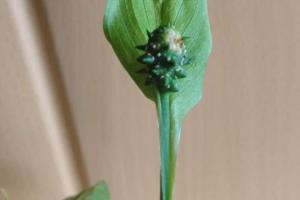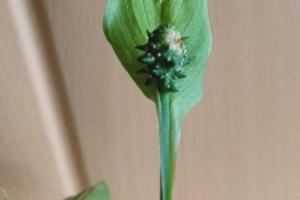How to Rebloom Orchids Indoors (5 Hacks That Actually Work)
In the research for this article, I spoke to orchid growers and commercial suppliers to ascertain what are the most important factors for promoting an orchid to bloom again.
I’m sure you have noticed that you can find orchids for sale that are in flower at almost anytime of year. This is achieved by manipulating the environmental conditions to prompt the orchid to bloom.
It should be noted that orchids in most climates primarily start to grow their flower spikes in the Fall or Winter and flower in late Winter or early Spring with the blooms sometimes lasting longer then three months.
Orchids usually only produce one flower spike each year so the reason your orchid is not reblooming may just be because it is not the right season.
Note that stress factors such as root rot, sun burn and leaf loss can all reduce the chance of orchids rebloming.
Here are the top five hacks for how to get your orchids to rebloom:
1. Cooler Temperatures of Between 55°F (12°C) to 60°F (16°C) Cause Orchids to Rebloom
Temperature is by far the most important factor for initiating an orchid to rebloom.
Move your orchid to a cooler room of the house with temperatures between the range of 55°F (12°C) to 60°F (16°C) during the night for around for weeks to stimulate the growth of a new flower spike.
In my experience, the best way to do this is to move the orchid to a relatively cool window sill for 4 weeks.
This drop in temperatures for this period of time indicates to the orchid that this is the right time to grow and new flower spike and display more flowers.
This works because the drop in temperature replicates seasonal cycle of temperature the orchid in its native environment, which is a signal for the orchid to flower.
If the temperature remains too high on a consistent basis, then the orchid does not grow a new flower spike or display any flowers as it relies on the seasonal fluctuation of temperature to indicate the correct time of year for flowering.
I have spoken extensively to orchid growers and commercial suppliers at regional garden events and they assure me that this is the most important hack for getting your orchids to rebloom, particularly phalaenopsis orchids indoors.
Orchids are cultivated in a temperature controlled environment to ensure that they are in flower in time for sale, so this is the reason you can buy orchids at practically anytime of year, regardless of seasonality.
For most houseplant growers, generally speaking orchids develop their flower spikes in Winter flower in the early Spring due to the natural change in temperature in our homes at this time of year, however this depends on the climate your are in.
It is typically home owners in consistently warm climates, or people with heated homes year round that have most trouble getting an orchid to bloom again due to the lack of a seasonal cycle of cool temperatures.
In this circumstance, I recommend opening a window at night for some relatively cooler air or to use a cool mist humidifier which are available from garden centers or online. A cool mist humidifier can create the humid conditions that orchids prefers whilst maintain cooler temperatures to help prompt the development of a flower spike and therefore blooming.
2. Cutting The Flower Spike- Where to Cut to Get Orchids to Rebloom
Orchids can flower on the tip of the same spike again sometimes but usually only on a side shoot of the flower spike which emerges from a different node lower down the spike.
The flowers cannot remerge from the same place. To stimulate the growth of a side shoot which has the potential to display flowers, cut the orchid flower spike soon after the original flowers have dropped just above the node with a sharp pair of pruners.
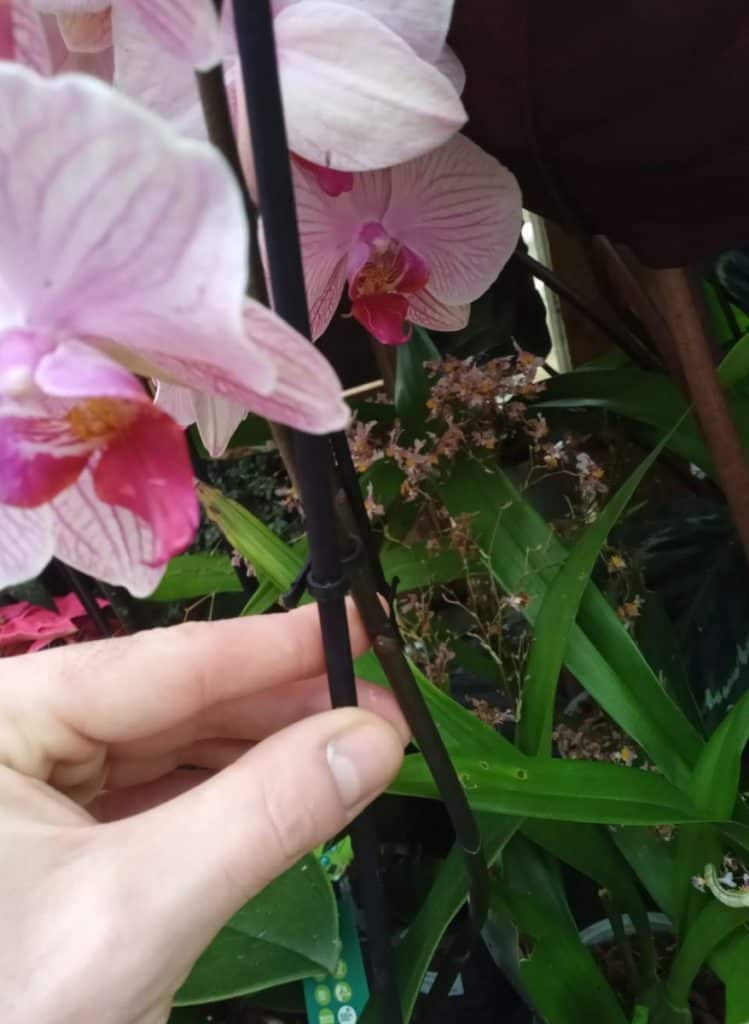
It is important to do this quickly after the flowers have dropped off as often the flower spike turns yellow, dries out and dies back if it is just left.
Once you have cut the stem back an new side shoot should emerge from which more flowers can be displayed.
However, whilst this hack is effective at prompting more flowering, most orchid growers cut the flower spike back to the base of the plant after the orchid’s flowers have dropped.
Flowering is such an energy intensive process for the orchid that producing more flowers, even on a side shoot can take a lot out of the orchid.
Instead, the commercial growers that I spoke to recommend to cut the flower spike back to the base so that the orchid can concentrate on the growth of leaves and roots which should give the orchid more energy for flowering the following year.
3. Light, Humidity and Temperature Control
To incentivise an orchid to flower, it is important to replicate some of the conditions of their natural tropical habitat.
Phalaenopsis orchids (which are by far the most common houseplant orchids) grow and flower on tree branches in bright conditions, but crucially protected from any intense sunlight by the canopy overhead.
In their natural habitat the humidity is high at around 60% (although this can fluctuate due to a number of variables) and in consistent, warm temperatures.
Orchids need bright, indirect light to have enough energy to flower. Too much sun and the leaves, flower spike and even the roots can scorch, which can cause developing flowers and flower buds to drop off, so always protect the orchid from harsh direct sunlight.
However too much shade also cause poor growth and reduces the likelihood of flowers developing.
It is important to increase the humidity around your orchid to promote flowering. To do this you can:
- Locate your orchid in a more humid room, such as a bathroom.
- Mist the leaves, roots and flower buds regularly to create a humid micro climate.
- Use a plant humidifier.
In my experience, all three of these options work well, but I most often favour the option of placing my orchids in a bathroom, as I have frosted glass window which creates a nice balance of bright light whilst not being too harsh.
The temperature in the bathroom is also optimal for orchids. As I mentioned under the first sub heading, a cool temperature for 4 weeks is require for the orchid to develop flower spikes. However, after the four week period of cool temperatures, it is important to provide consistent warm temperatures.
Realistically orchids can flower well at room temperature, with a temperature range of 65°F to 80°F (16°C to 26°C) so often this is not a big issue.
However it is important to avoid any sudden temperature fluctuations, such as an intolerable cold blast of air from an open window on a cold day or indoor heating suddenly increasing the temperature as this can cause the orchid stress and result in any flowers or flower buds dropping.
I would also recommend to keep your orchid orientated one way once the flower spike has begun to grow. Flower spikes and flowers grow towards the brightest light so, if you keep turning the orchid or move locations then the growth can be irregular, which can impact flowering.
(For more information, read my article how to care for phalaenopsis orchids indoors).
4. Use a Orchid Spray Fertilizer to Promote Blooms
Orchids are relatively heavy feeders and reblooming an orchid requires a lot of resources, such as light, humidity and nutrients.
Therefore it is important to fertilize your orchid consistently. Whilst the flower spike may emerge in the Winter (depending on your climate) most of the vegetative growth of the leaves and roots happens in Spring and Summer, with the leaves photosynthesizing and providing the orchid with enough energy to bloom.
I personally recommend a spray fertilizer for orchids as spraying the roots and potting medium mimics the way in which orchids uptake nutrients in their native environment (orchids uptake moisture and nutrients in humid air naturally).
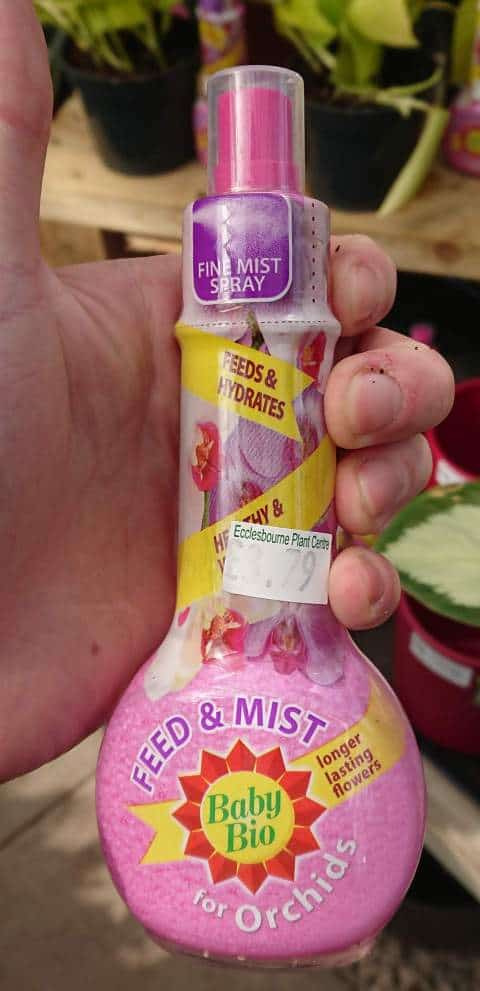
It is always better to use a specific orchid fertilizer product as they have the right nutrients at the optimal concentration to support reblooming. Normal houseplant fertilizer can sometime burn an orchids roots.
With a mist fertilizer, I apply it every 2 weeks all year round to provide the orchid with enough energy to display its flowers.
5. Does Day Length Play a Role in Orchids Blooming? (Photo Periodisation)
There is some contrary information on whether day length plays a significant role in getting orchids to rebloom.
Some species of orchid are short day plants which means that the only flower when there are fewer hours of daylight and more hours of darkness. They rely on this as a signal from the environment that this is the right time of year to start producing flowers.
This may be why orchids tends to start growing flower spikes in the Winter.
Phalaenopsis orchids (the most popular species of houseplant orchid) are technically short day plants but I have spoken to some commercial orchid growers who suggest that it is not a significant factor in getting the orchids to rebloom.
The reason they say this is because there are people who grow and flower their orchids at times of year and in locations where they day length is not shorter then the amount of hours of darkness.
If you are struggling to get your orchid to rebloom then perhaps restrict the hours of light during Winter by locating the orchid in a room where any indoor lights are not on, so that the orchid can experience darkness.
How long Does it Take For Orchids to Bloom Again?
Typically an orchid grows one flower spike a year and the blooms last months, so it may be several months before your orchid blooms is you are just letting your orchid bloom naturally without trying to prompt blooming by adjusting the environmental conditions.
If you need any more help, read my article, why is my orchid not blooming?
Key Takeaways:
- The best way to get an orchid to rebloom is to locate your orchid in a cool room with a temperature between 55°F (12°C) to 60°F (16°C) which signals to the orchid that this is thr ight time to produce a flower spike and display flowers.
- To get an orchid to flower again on the same spike, cut the spike just above the bottom node which stimulates a side shoot to grow from which flowers can be displayed.
- Orchids need bright indirect light to flower with high humidity.
- Use a specialized orchid fertilizer to ensure the orchid has the resources it needs to flower.
- Phalaenopsis orchids prefer fewer hours of daylight and more hours of darkness to prompt flowering.



